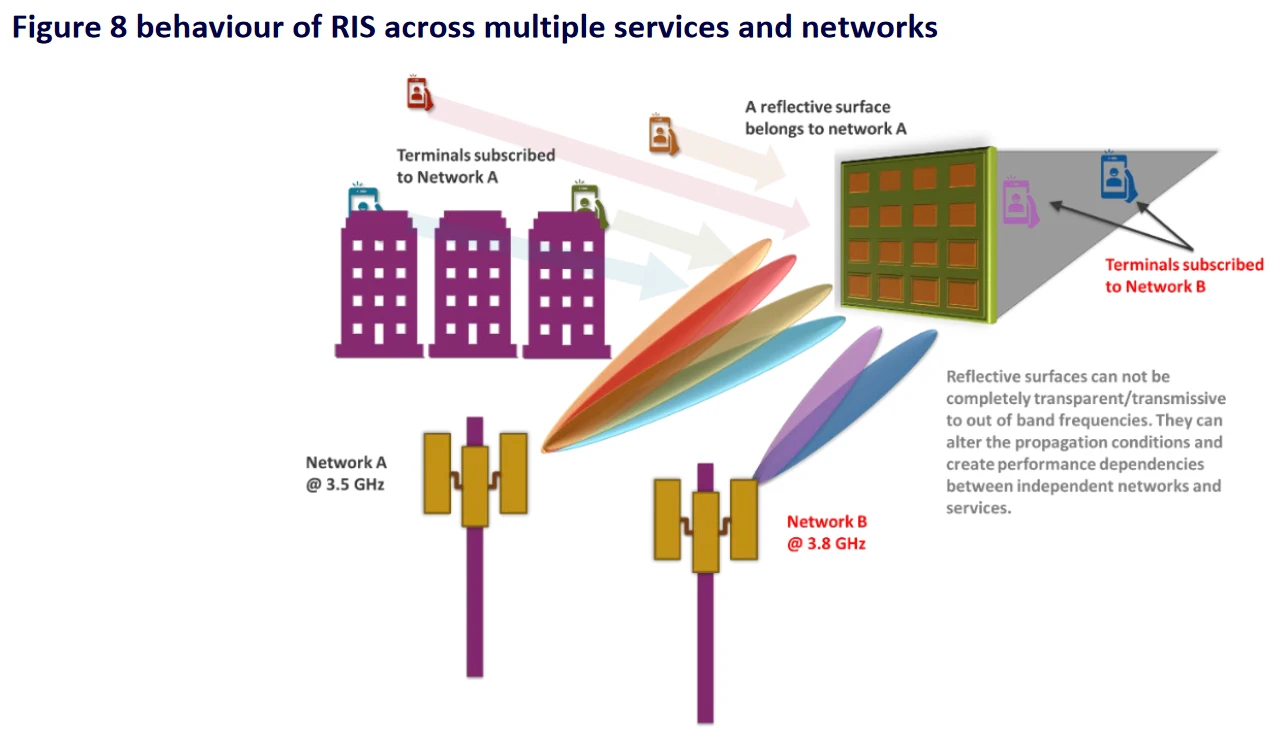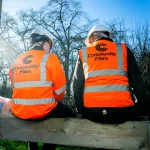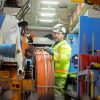Ofcom UK Explore Reflective Surfaces to Boost Mobile Coverage

The UK communications regulator, Ofcom, has today published an interesting new white paper that, in collaboration with Queen Mary University of London, explores whether “reflective surfaces” could be used to cost-effectively extend the coverage of wireless broadband and mobile networks. But more research is required.
The term “reflective services” is almost too generic to have much meaning beyond the obvious (you’re probably thinking of a mirror), but in this case it means surfaces that are “primarily envisaged as non-amplifying devices [unlike repeater/relay technologies] and limited to adding advantageous signal paths, referred to as multipath diversity, between wireless terminals under non-line of sight (NLOS) conditions“.
In the practical sense, such reconfigurable reflective surfaces / devices, widely referred to as a Reconfigurable Intelligent Surface (RIS) in the white paper, would be placed some distance away from the original signal source (e.g. a mobile mast) and help to extend the coverage of the wireless / mobile network.
Advertisement
All the modelling and simulations done for this in the paper were limited to frequencies below 6GHz (mostly reflecting 5G friendly bands), although Ofcom states that the fundamental behaviours they observed would also be relevant to higher frequencies. But use cases targeting even higher millimetre wave (mmWave) frequencies were not considered. Reflective surfaces are currently an area of active research and standardisation in this area is still in its infancy.

The driving attraction behind reflective surfaces is to provide a potentially low-cost and low-complexity solution to extend the coverage of wireless networks, but the research highlighted a number of potential technical challenges and regulatory implications that would need to be addressed before reflective surfaces can be widely deployed.
Ofcom’s Initial Considerations
While we recognise that reflective surfaces may have potential benefits, we believe that further work is required by field experts to understand the regulatory implications for their deployment, especially in environments where multiple independent networks and services coexist. This is because, on the basis of the work we have undertaken in collaboration with Queen Mary University of London, we consider there are potential technical challenges associated with the adoption of reflective surfaces. In particular:
• Reflective surfaces can produce unwanted scattering effects (technically referred to as “spurious sidelobes”) which can increase interference and degrade the performance of network terminals unless upgraded to cope with additional interference levels.
• Redirecting wireless coverage using reflective surfaces works like a zero-sum game. While using a reflective surface to enhance the coverage in one area, it can weaken the coverage in other areas or the area behind it due to shadowing. Shadowing effects are inversely proportional to the distance between a reflective surface and signal source.
• Reflective surfaces can alter propagation conditions of out-of-band frequencies, which can impose coexistence challenges and impairments to existing services and networks.
To address these challenges, the white paper recommends that further research is needed to examine the performance of reflective surfaces and to develop mitigation techniques for interference. The paper recognises that reflective surfaces have potential benefits, but further work is required by field experts to understand the regulatory implications for their deployment, especially in environments where multiple independent networks and services coexist.
Advertisement
Sadly, the paper doesn’t really give us much indication of how much this approach could improve the performance or coverage of a mobile network in a particular area, but hopefully that may come further down the road – assuming they can find ways of reducing its negative impacts.
Mark is a professional technology writer, IT consultant and computer engineer from Dorset (England), he also founded ISPreview in 1999 and enjoys analysing the latest telecoms and broadband developments. Find me on X (Twitter), Mastodon, Facebook, BlueSky, Threads.net and Linkedin.
« Juniper Networks Gobbled by Hewlett Packard Enterprise





















































bit odd, for ofcom to pretend to have understanding of mobile tech.
When every single state entity is encouraged to grow to waste more money, pretending is the outcome
How about –
Stop placing towers in wooded areas surrounded by tree’s taller than the tower itself.
Increasing the height of some towers.
Increasing transmit power of cell sites where necessary.
The networks in the uk seem to be operating on a shoestring budget where any investment in mobile communications seems to be heading into anything other than providing a better service for all.
people want cheaper and cheaper mobile contracts while also wanting better services, profit margins in mobile sector are some of the lowest they have ever been. telecoms industry uses a huge amount of electricity which has been unusually expensive for the last few years. uk has some of the cheapest phone bills in the first world, something has got to give
Our council have refused a fair few masts because of the height, so here at least they are never going to get the height unless our council change their mind.
Most masts here, or at least in the city, are not hidden by trees.
I don’t see why they need to build new masts anyway, the ones that are up are plenty high enough, if not then it just proves that this 5G tech is not so great after all.
I couldn’t agree more my local village the mobile mast is surrounded with trees they should have then the open. I think the main reason they have hidden is mainly is because of all stupid people who think the mobile mast cause cancer and covid 19
Passive TV relays have been used for years to get signal into a coverage hole, and for point-to-point microwave links.
https://en.wikipedia.org/wiki/Passive_repeater
In rural areas it is well known that mobile signals improve dramatically when the ground in covered in snow (but not while it is actually snowing).
I think it depends on the type of snow as wet and dense snow can absorb and attenuate radio signals.
Does a bald head count as a reflective surface?